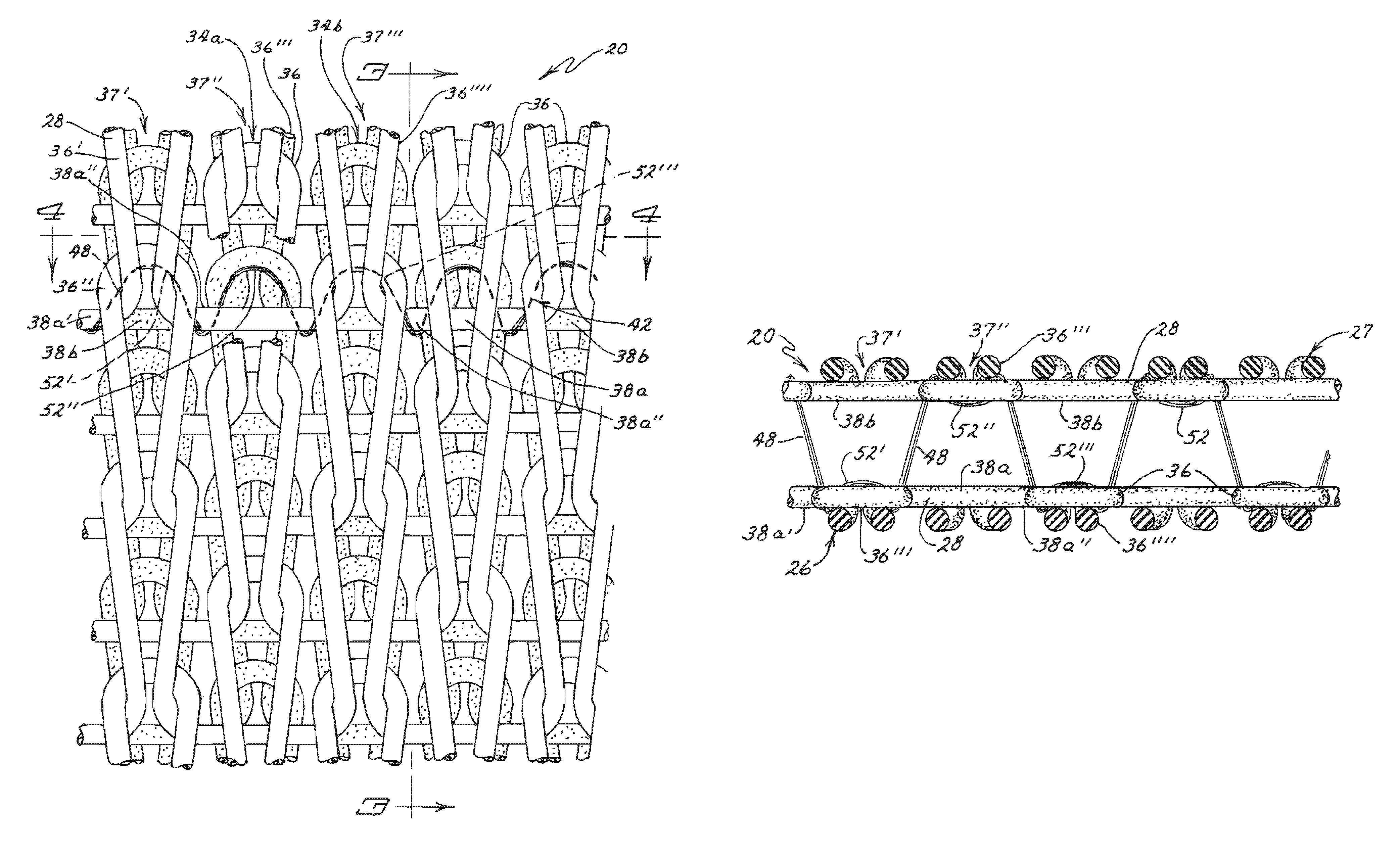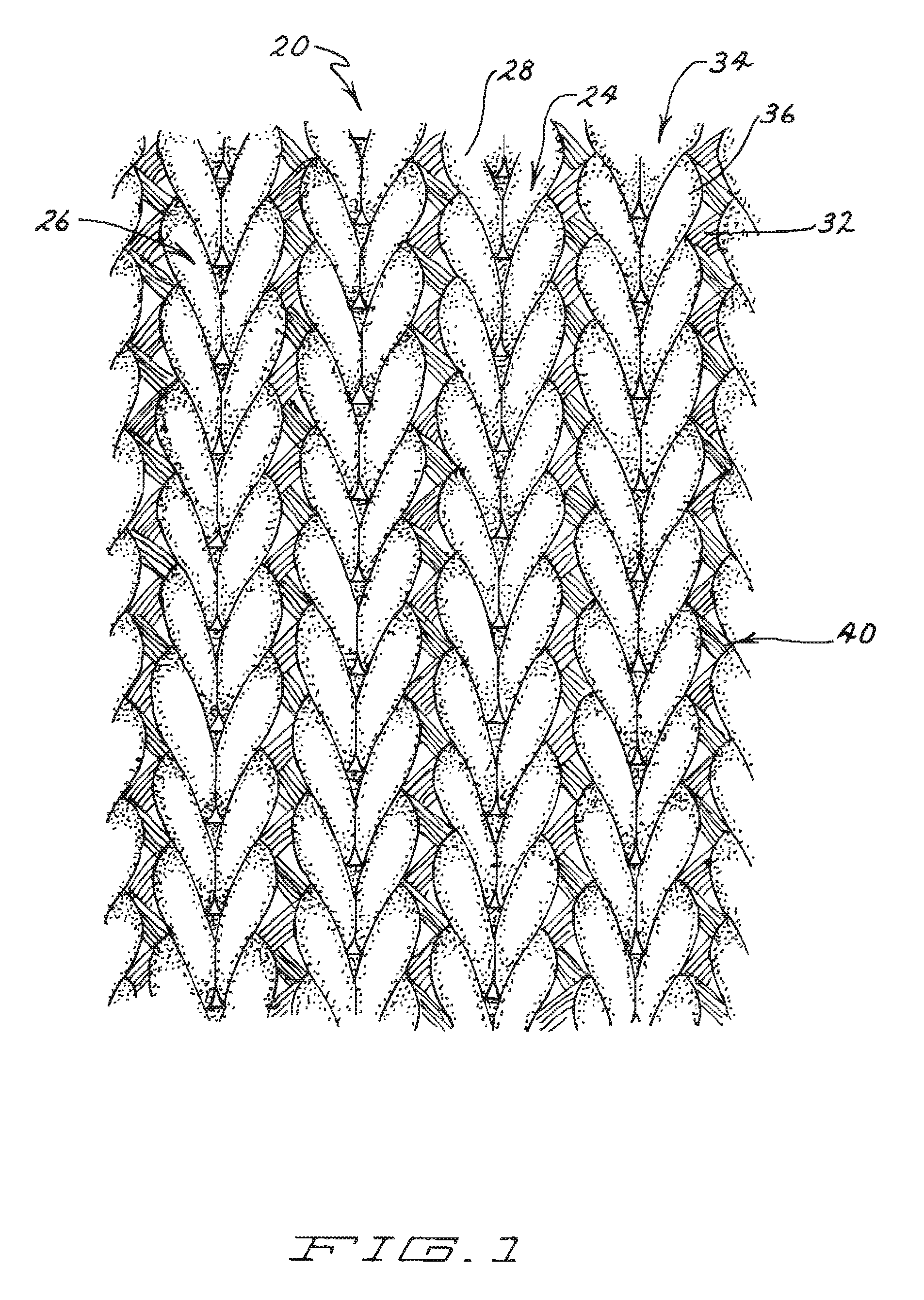Modified jersey knit fabric and methods of making the same
a technology of jersey knit and knit fabric, which is applied in the field of weft knit textile fabric, can solve the problems of adding to the difficulty of making the desired fabric, unable and not able to develop the proper weaving process or knitting method, so as to achieve the desired complex combination of properties in a single fabric. achieve the effect of low resilience, and low elasticity or resilien
- Summary
- Abstract
- Description
- Claims
- Application Information
AI Technical Summary
Benefits of technology
Problems solved by technology
Method used
Image
Examples
example 1
[0043]The knit fabric of Example 1 is a weft knit fabric made on a 3-system flatbed 12 gauge computerized flatbed knitting machine (CMS 530 HP Multi-Gauge) made by Stoll (H. Stoll GmbH & Co. KG, Stollweg 1, 72760 Reutlingen, Germany). The knit fabric is constructed as a half gauge tubular knit structure joined together by a 1×1 rib knit structure that is knit inside of the tubular structure. The tubular knit structure is knit using a jersey knit stitch preferably made of bare rubber strands, although further alternate embodiments can be made from a combination of bare rubber strands and non-elastic yarns, such as polypropylene yarn(s) and the rib structure is formed using a tuck stitch made of non-elastic yarn, preferably spun polypropylene yarns. In this example, extruded, 38 gauge uncovered natural bare rubber strands, at least partially coated with an amount of industrial grade Talcum powder that is equal to or less that the weight of the bare rubber is used to make the jersey st...
PUM
| Property | Measurement | Unit |
|---|---|---|
| tensile strength | aaaaa | aaaaa |
| tensile strength | aaaaa | aaaaa |
| tensile strength | aaaaa | aaaaa |
Abstract
Description
Claims
Application Information
 Login to View More
Login to View More - R&D
- Intellectual Property
- Life Sciences
- Materials
- Tech Scout
- Unparalleled Data Quality
- Higher Quality Content
- 60% Fewer Hallucinations
Browse by: Latest US Patents, China's latest patents, Technical Efficacy Thesaurus, Application Domain, Technology Topic, Popular Technical Reports.
© 2025 PatSnap. All rights reserved.Legal|Privacy policy|Modern Slavery Act Transparency Statement|Sitemap|About US| Contact US: help@patsnap.com



